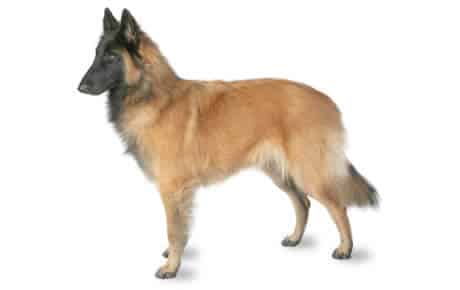The Belgian Tervuren is named after a village in Belgium. Its classification varies, being classified under some breed standards as a breed in its own right and in others as one of several acceptable variations of the Belgian Shepherd Dog. It is usually listed within breed standards under one or other, or a combination, of these names.

In the United States, since 1959, the AKC recognizes it under the name Belgian Tervuren. Prior to 1959, the Belgium Tervuren was shown as Belgium Sheepdog. In that year, the AKC granted the breed separate status.
History
The Belgian Tervuren is one of four varieties of shepherd dogs that were developed in Belgium in the late 1800s. The four varieties are the Malinois (fawn-mahogany, short coat with black mask), Belgian Tervuren, the Laekenois, and the Groenendael.
The American Kennel Club recognizes all but the Laekenois as separate breeds in the U.S., while the United Kennel Club recognizes all four types as one.
The Club du Chien de Berger Belge was formed in September 1891 to determine which of the many different types of dogs was representative only of the shepherd dogs developed in Belgium.
In November of that same year, breeders and fanciers met on the outskirts of Brussels to examine shepherd dogs from that area.
After much deliberation, veterinary professor Adolphe Reul and a panel of judges concluded that the native shepherd dogs of that province were square, medium-sized dogs with well-set triangular ears and very dark brown eyes and differed only in the texture, color, and length of hair. Subsequent examinations of dogs in other Belgian provinces resulted in similar findings.
Temperament
A proper Belgian Tervuren is observant and vigilant, making him an excellent watchdog. A Tervuren is a confident protector of his people and property and doesn't attack without cause. He's affectionate and friendly with people he knows, especially family members. He's also demanding their
time and attention. This breed does not like to be left alone; he wants to be doing things with the family.
He requires plenty of mental stimulation in the form of training and plays, especially with puzzle toys such as Buster Cubes, as well as interactive play
such as fetch games.
Ideally, that is what can happen. However, it is necessary to have proper training, education on the breeder, and genetic history to have that situation. Like most herding dogs, it is important to get them involved in a high-energy activity, or else they can become destructive.
